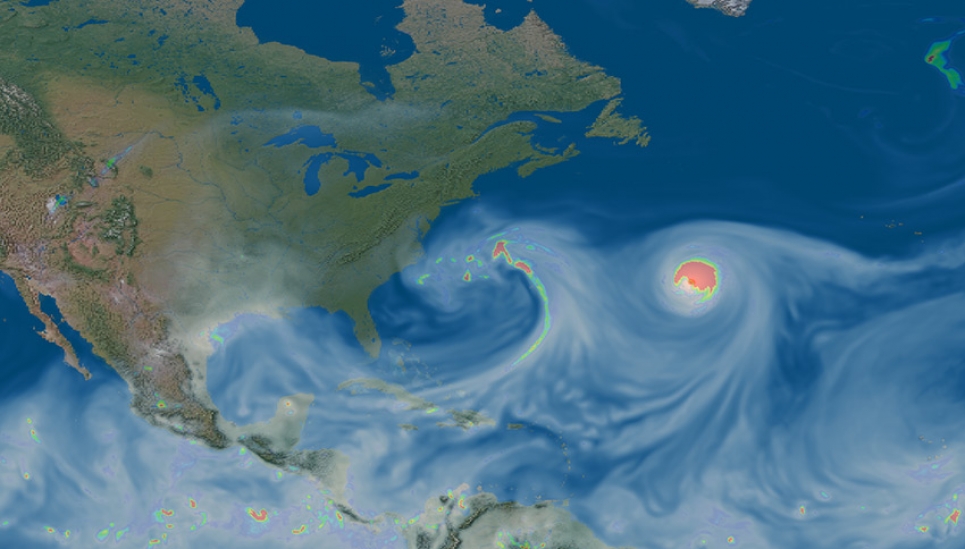
Using deep Learning to Parameterize Radiative Transfer in Numerical Weather Prediction
Radiation is an important component of the global energy budget. The atmosphere warms in areas of radiative-flux convergence and cools in areas of divergence. In numerical weather prediction (NWP), radiative transfer is parameterized, with a radiative-transfer model (RTM) run separately in each column (at each horizontal grid location). The most accurate RTMs are line-by-line models, which explicitly simulate absorption by each important molecule in each spectral band. However, line-by-line models are too computationally expensive to run in NWP. In practice, faster but less accurate RTMs, such as the Rapid Radiative-transfer Model (RRTM), are used in NWP. However, even the RRTM is too slow to run at every NWP time step, so it is typically called every 20th time step, accounting for ~50% of the computation of the full NWP model. This approach assumes that radiative transfer is constant during the intervening 19 time steps, which decreases the accuracy of NWP. This has motivated the use of machine learning (ML), which is typically less computationally expensive, to replace current RTMs in NWP (see Krasnopolsky 2020 and references therein). We are continuing this work with deep learning, a subset of ML models that can learn directly from gridded data and exploit spatiotemporal relationships therein.
Specifically, we use a U-net++ model, a type of convolutional neural network, to estimate shortwave radiative transfer in the Global Forecast System (GFS) NWP model. The predictor variables include surface albedo, solar zenith angle, and vertical profiles (e.g., temperature, liquid-water content and path, ice-water content and path, water-vapour content and path, trace-gas concentrations, aerosol extinction coefficient) defined at heights from 0-75 km above the surface. The target variables are those required by NWP from an RTM: surface downwelling flux, top-of-atmosphere upwelling flux, and the vertical profile of heating rates. We train the U-net++ in offline mode (outside the GFS model) to emulate the RRTM. We are currently moving towards online testing to determine how the GFS model performs as a whole with the U-net++, instead of the RRTM, used to parameterize radiative transfer. The U-net++ is ~1000 times faster than the RRTM, so if online testing is successful, radiative transfer could be called at every atmospheric time step rather than every 20 time steps, which should improve the overall performance of the GFS.
I will present testing results as a function of geographic location, height, time of day, time of year, and cloud régime (clear sky, single-layer cloud, and multi-layer cloud). Also, I will show the effects of including physical constraints in the loss function and architecture of the U-net++. Finally, I will discuss difficulties in emulating the RRTM in the lowest 1 km above the surface, caused by the GFS using a sigma-level grid rather than a standard height grid, and approaches we have taken to solve this problem.
Zoom Link: https://argonne.zoomgov.com/j/16054902873